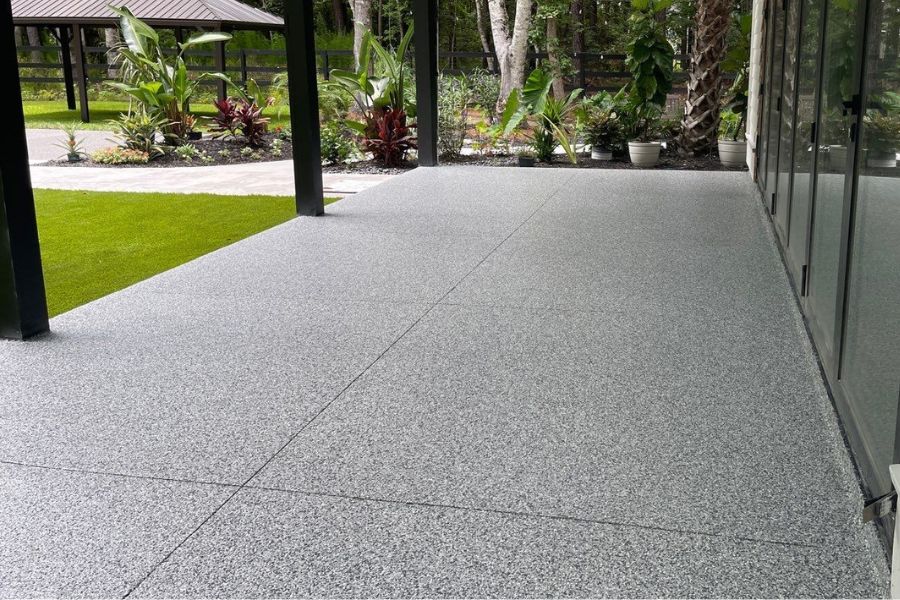The Ultimate Guide to Concrete Coatings for Coastal Homes
Coastal homes face relentless enemies from salt, sand, and stormy weather conditions. We’ve found that high-quality concrete coatings play an essential defense role, warding off salt corrosion, moisture damage, and the ceaseless toll of erosion. These protective coatings aren’t just about preserving your home’s aesthetic appeal, they’re about ensuring its longevity for your family. The secret to success is combining the right type of coating with regular upkeep and proactive strategies to control sand erosion. Dive deeper into our guide and you’ll gain the insights you need to protect your coastal home effectively.
Why Coastal Homes Need Protection
As we stand on the shore, we can’t help but admire the charming coastal houses that dot the landscape. However, these houses are constantly exposed to coastal erosion, a relentless force that can cause concrete decay. The salty sea air, coupled with the constant battering of wind, can erode the concrete structures of these houses, leading to cracks, chips, and in severe cases, structural instability.
Fortunately, we have the means to combat this. Protective coatings are an excellent solution, providing a barrier against the harsh coastal environment. They seal off the concrete, preventing moisture and salt from penetrating and causing harm. Alongside this, waterproofing solutions can be integrated into the home’s design to ensure longevity.
Maintenance, of course, is key. Regular checks for signs of wear and tear, and prompt repairs as needed can greatly slow down the decay process. We owe it to these beautiful houses, and their owners, to preserve them against the ravages of nature.
The Impact of Coastal Weather
Under the vast canopy of the sky, coastal homes courageously confront a distinctive blend of weather conditions. These homes, situated on the edge of the ocean, are exposed to a continuous onslaught of weathering effects. From wind-driven rain to tropical humidity, these elements can result in severe moisture damage.
Extended exposure to such conditions can heighten corrosion risks, especially for concrete. Fortunately, we’re not defenseless against Mother Nature. By understanding the challenges, we can equip our homes with the necessary defenses.
One of the most efficient solutions is the application of high-quality concrete coatings. These protective layers offer sealing benefits, serving as a shield against the harsh coastal weather. They block out moisture, preventing it from infiltrating the concrete and causing damage. Not only that, they also contribute significantly to the long-term durability of coastal homes.
We must remember, that it’s not just about preserving the visual appeal of these homes. It’s about ensuring their longevity and creating secure, resilient spaces for families to build memories for years to come.
How Salt Affects Concrete
While we’ve discussed the general impact of coastal weather, one specific element has yet to be explored – salt. Salt corrosion can hasten concrete deterioration to a great extent. As salt infiltrates the pores of concrete, it attacks the reinforcements within, causing it to crack and crumble.
The good news? We’ve got solutions. Protective coatings are your first line of defense. These act as a shield, blocking salt and other harmful elements from penetrating the concrete. Maintenance is key in slowing down the salt corrosion process. Regularly rinsing your concrete surfaces will help remove accumulated salt. Consider sealing options! These can help to further prevent salt penetration, ensuring your concrete stays strong and durable for longer.
The Role of Sand in Erosion
Moving on from salt corrosion, another significant factor that contributes to concrete destruction in coastal homes is sand. Let’s explore this often-overlooked yet important issue.
Sand erosion is a powerful force of nature. The continuous movement of sand, driven by winds and tides, can gradually wear away the surface of your concrete structures, leading to significant surface deterioration over time. This is especially true for homes located near beaches or in sandy areas.
Furthermore, sand can also intensify the corrosive effects on concrete. When mixed with salt and water, it can create a potent combination that speeds up the breakdown of concrete materials. Sand contributes to moisture infiltration. Tiny sand particles can become embedded in concrete, creating small gaps or voids. These voids allow water to seep into the concrete, causing further damage.
To address these effects, it’s important to consider:
- Putting in place erosion control measures
- Using concrete with high abrasion resistance
- Getting the correct protective coating
Conclusion
To sum up, we can’t overstate the importance of protecting your coastal home with concrete coatings. The relentless assault of coastal weather, salt, and sand can wreak havoc, causing serious erosion. But, equipped with the right coating, your home can shrug off these challenges. So, don’t wait until it’s too late. Let’s safeguard your seaside sanctuary together, ensuring it remains beautiful and strong for many sun-soaked years to come.

